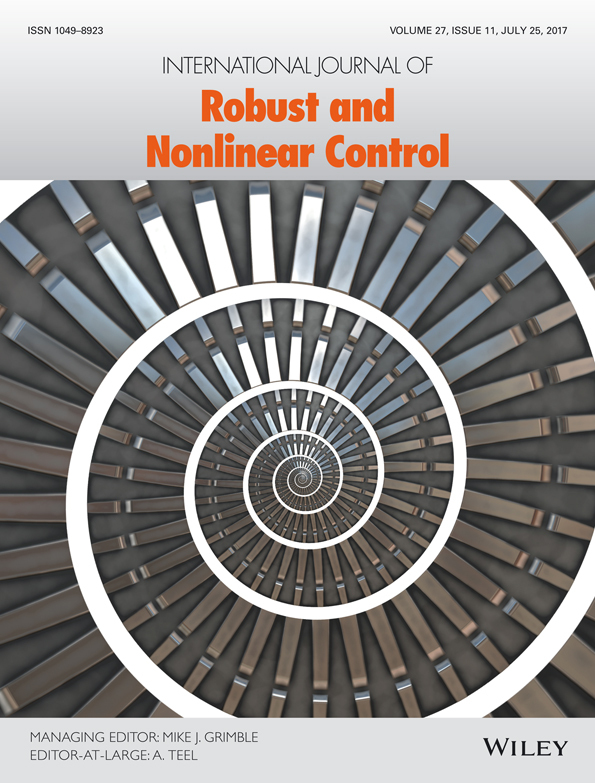Robust observer-based stabilization of Lipschitz nonlinear uncertain systems via LMIs - discussions and new design procedure
Summary
This paper presents a new observer-based controller design method for Lipschitz nonlinear systems with uncertain parameters and
 -bounded disturbance inputs. In the presence of uncertain parameters, the separation principle is not applicable even in the case of linear time invariant systems. A state of the art review for uncertain linear systems is first presented to describe the shortcomings and conservatism of existing results for this problem. Then a new LMI-based design technique is developed to solve the problem for both linear and Lipschitz nonlinear systems. The features of the new technique are the use of a new matrix decomposition, the allowance of additional degrees of freedom in design of the observer and controller feedback gains, the elimination of any need to use equality constraints, the allowance of uncertainty in the input matrix and the encompassing of all previous results under one framework. An extensive portfolio of numerical case studies is presented to illustrate the superiority of the developed design technique to existing results for linear systems from literature and to illustrate application to Lipschitz nonlinear systems. Copyright © 2016 John Wiley & Sons, Ltd.
-bounded disturbance inputs. In the presence of uncertain parameters, the separation principle is not applicable even in the case of linear time invariant systems. A state of the art review for uncertain linear systems is first presented to describe the shortcomings and conservatism of existing results for this problem. Then a new LMI-based design technique is developed to solve the problem for both linear and Lipschitz nonlinear systems. The features of the new technique are the use of a new matrix decomposition, the allowance of additional degrees of freedom in design of the observer and controller feedback gains, the elimination of any need to use equality constraints, the allowance of uncertainty in the input matrix and the encompassing of all previous results under one framework. An extensive portfolio of numerical case studies is presented to illustrate the superiority of the developed design technique to existing results for linear systems from literature and to illustrate application to Lipschitz nonlinear systems. Copyright © 2016 John Wiley & Sons, Ltd.



 circle criterion observer design for Lipschitz nonlinear systems with enhanced LMI conditions
circle criterion observer design for Lipschitz nonlinear systems with enhanced LMI conditions observer-based stabilization method for systems with uncertain parameters and Lipschitz nonlinearities
observer-based stabilization method for systems with uncertain parameters and Lipschitz nonlinearities
